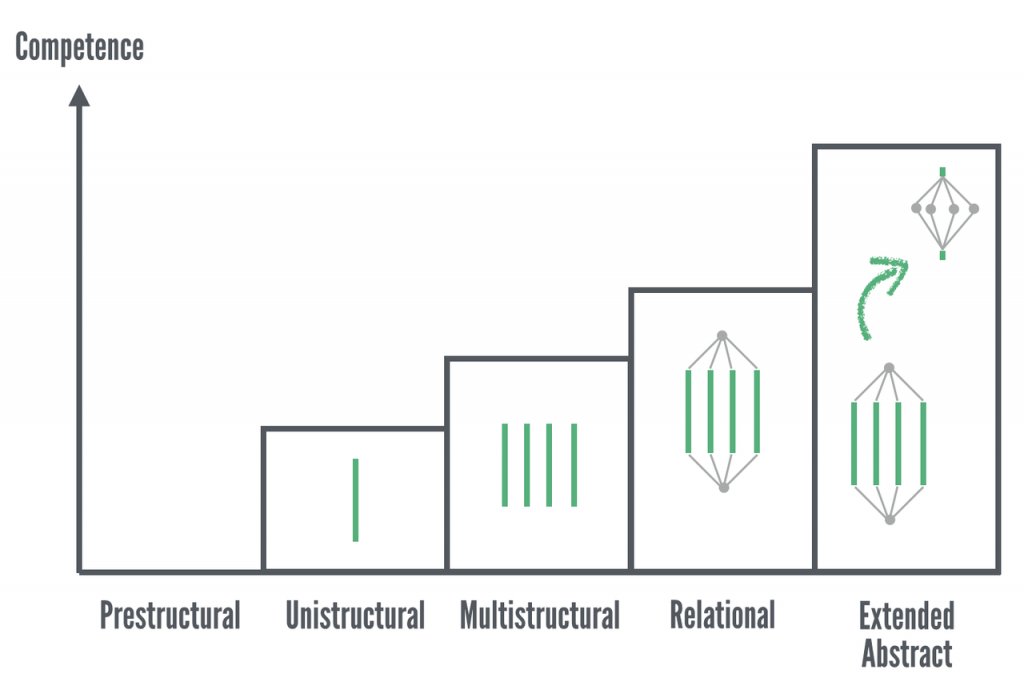SOLO Taxonomy
Introduction
The SOLO Taxonomy (Structured of Observed Learning Outcome) is a way of assessing the complexity of understanding achieved by a student with respect to a particular learning outcome.
This taxonomy was proposed by John B. Biggs and K. Collis. A similar way of approaching the complexity of student learning is Bloom’s taxonomy.
The SOLO Taxonomy
There are five levels of complexity that can be identified in the way that a student understands or has responded to a learning outcome and the associated learning activity. These reflect increasing competence and higher order thinking and learning.
- Pre-structural – The task is not attacked appropriately; the student hasn’t really understood the point and uses too simple a way of going about it.
- Uni-structural – The student’s response only focuses on one relevant aspect.
- Multi-structural – The student’s response focuses on several relevant aspects but they are treated independently and additively. Assessment of this level is primarily quantitative.
- Relational – The different aspects have become integrated into a coherent whole. This level is what is normally meant by an adequate understanding of some topic.
- Extended abstract – The previous integrated whole may be conceptualised at a higher level of abstraction and generalised to a new topic or area.

References and further reading
Biggs, J. B. and Collis, K. (1982) Evaluating the Quality of Learning: the SOLO taxonomy. New York: Academic Press
Biggs, J. B. (1999). Teaching for quality learning at university. London: Open University Press

[…] similar taxonomies have been developed, such as the SOLO taxonomy (which is a little simpler and easier to tie to a single learning outcome or learning activity). […]